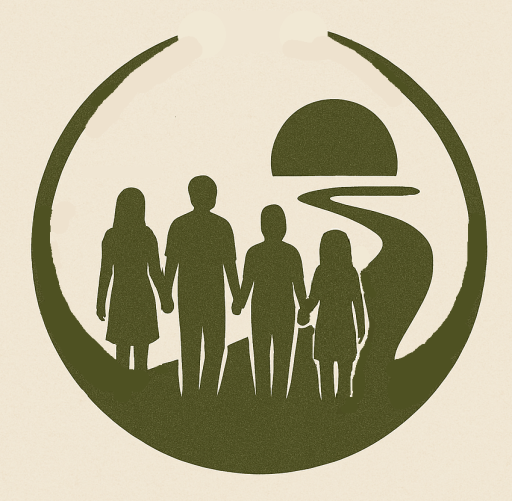They call it the three-day effect—a kind of cognitive and emotional reset that happens after about 72 hours immersed in nature. A 2012 study by neuroscientist David Strayer and colleagues published in PLOS ONE found that people scored significantly better on creative problem-solving tasks after three days in the wilderness, without digital devices. The researchers suggested that nature allows the prefrontal cortex to rest and recover, freeing up mental bandwidth. This builds on similar experiements that have been conducted since the 1970s and likely before.
With Easter offering a rare four-day break, we decided to put the theory to the test. We’re no strangers to the odd physical challenge, but this one was new in a few ways. We hiked with our two children on Friday and Monday, bookending a stationary camp nestled in a shaded clearing on my dad’s farm, with panoramic views of the Scenic Rim. No car access. No toilets. No screens. No books. Just tents, filtered gully water, and a tiny spirit stove with two little pots.
Ticks, Cards, and Creekbeds
We’d like to say the wilderness embraced us warmly, but it welcomed us with dozens of ticks instead. They were persistent enough to become a defining feature of the trip—constant checks, itches, and the bonding experience of helping each other search and remove them and reminding each other not to scratch!
Adam and Dani, somewhat unphased, threw themselves into games of cards. They played endlessly, creatively, on Monday even prioritising getting in more games over breakfast and heading back to civilisation. They also bickered extensively, but even that had its bright side. One long, circular early morning debate Emelie and I listened tensely to, a great test of self restraint, about which of them was more selfish, more helpful, and more humble somehow resolved with mutual laughter and an exchange of “I love you”s. Their bond deepened through their shared experience of both scoring less than they’d hoped in their recent school marks. Adding to that they had shared discomfort, dirt, and moments of wonder.
There were plenty of those too. We discovered the waterhole’s source after tracing it upstream through rough bush, listening for the trickle underfoot as we clambered over the rocks. At the top, far nearer to our camp than the waterhole we were familiar with, the water coming from the ground was almost clear, shaded by ferns (and thorns, so many thorns!) and home to crayfish and tiny red-throated finches. The ancient fig tree we camped under also provided food and shelter for mating butterflies, blue-bottomed bees, dozens of different birds, and even a python, spied at rest above our “kitchen”.
On Easter Sunday afternoon when Emelie and I arrived back from collecting water, Adam and Dani were sitting playing cards with cows and their calves gathered closely around them, as if they were part of the game. The kids related details of each of the cattle’s personalities and invited us to pat or scratch particular calves. Prior to this, the beasts had kept their distance, but I guess Adam and Dani seated on the grass was less threatening and more interesting than the four of us moving about. We also saw they had completed the rainbow they had made from wild flowers as part of their Easter scavenger hunt. Unable to find blue flowers and not quite willing to wrangle the blue-bottomed bees for the taskthey had stained some purple ones. Kudos for effort, they had certainly earned their chocolate reward.
No Photos, Just Impressions
With no tech on hand, we came back with no photos—but vivid memories. Adam described the transition from the paddock to rainforest as “stepping through a portal.” Emelie loved the slower pace and just being together outside – and all the sleep. We all noticed how quickly sleep came, partly because we didn’t stay up past dusk with nothing to do, and partly to avoid the mosquitoes. I didn’t take a watch and was surprised to learn later from Emelie, who did have hers, that we were in bed by 7:30 each night!
Did we feel the cognitive benefits of the Three Day Effect? For me, it was hard to say. I didn’t notice any dramatic mental clarity or surge in creativity—perhaps because regular cycling and unplugged moments are already part of my routine. Maybe because Adam and Dani’s high energy made it difficult to fully focus on nature and the present. For them, the shift wasn’t obvious either. They definitely enjoyed themselves, and they were wonderfully present and engaged with each other—but when we got back to their grandparents’ house, their attention was quickly drawn to the TV that their cousins had on. The allure is certainly strong!
What We Learned
This wasn’t a triumphant back-to-nature transformation. It was an experiment—and like many experiments, the results were inconclusive.
We were reminded that time outdoors can be restorative, even when it’s uncomfortable. That kids adapt quickly, and that connection doesn’t require deliberate entertainment. But we also rediscovered the joy of a real bed, a hot shower, and the comfort of the familiar when we arrived home.
Would we do it again? Probably. Though maybe with better tick protection or away from livestock. We’ll definitely keep seeking these chances to disconnect, even if not always for three full days or away from home.
